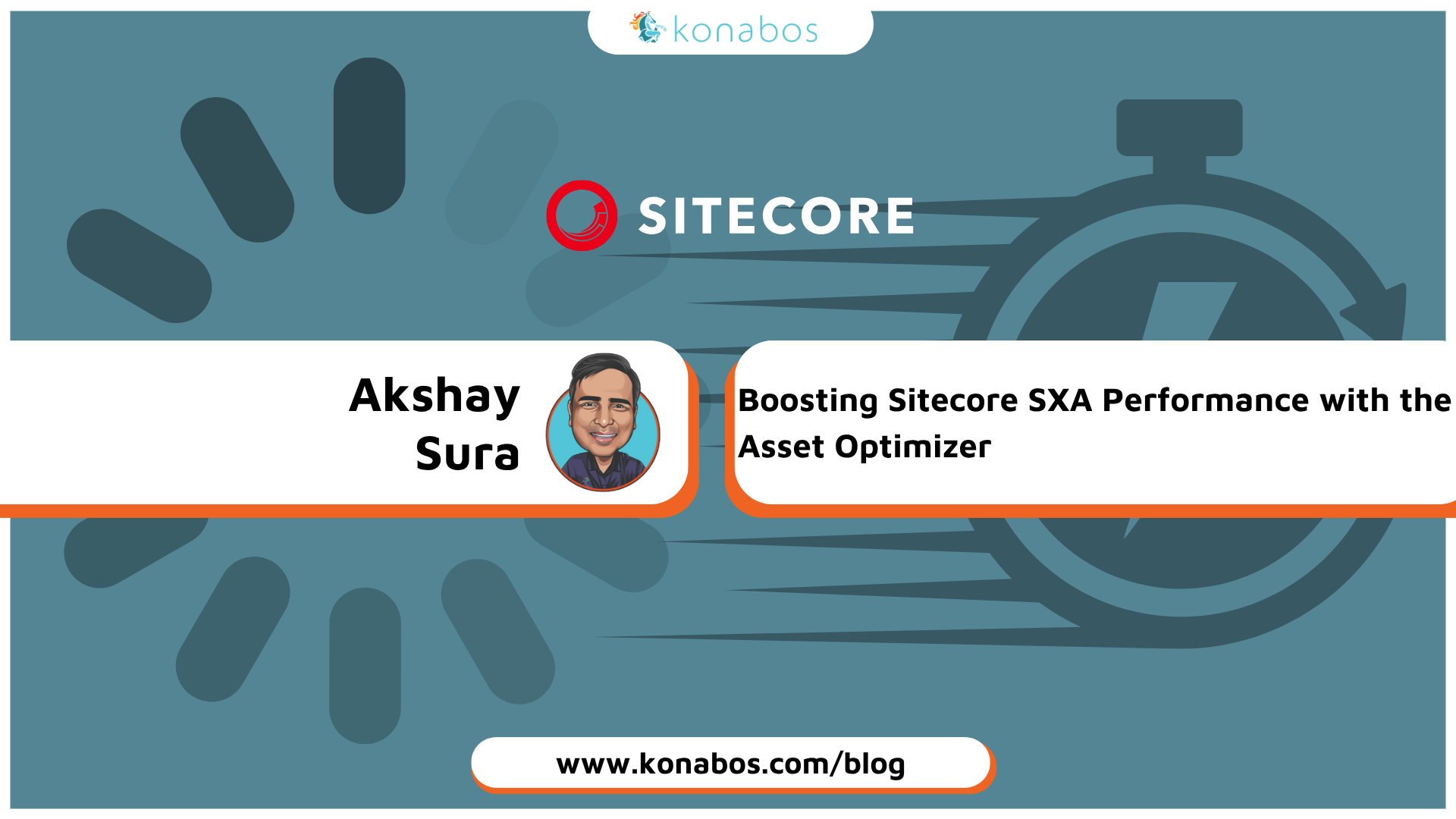Boosting Sitecore SXA Performance with the Asset Optimizer
Akshay Sura - Partner
8 Jul 2025
Users expect websites to load quickly, perform smoothly, and deliver seamless experiences across devices. One of the key factors influencing these expectations is front-end performance. Slow-loading pages frustrate users, damage SEO rankings, and ultimately impact conversion rates. For organizations using Sitecore Experience Accelerator (SXA), there’s a built-in feature designed to address this issue: the Sitecore Asset Optimizer.
In this post, we'll explore what the Sitecore Asset Optimizer is, why it matters, its core features, how to implement it accurately, and best practices for getting the most out of it.
What is Sitecore Asset Optimizer?
The Sitecore Asset Optimizer is a feature of SXA that improves front-end performance by bundling and optionally minifying CSS and JavaScript assets. This reduces the number of HTTP requests and file sizes, helping pages load faster.
According to the official Sitecore documentation, Asset Optimizer can:
- Concatenate CSS and JS files.
- Minify the concatenated files.
- Append cache-busting timestamps to URLs.
- Improve loading performance by reducing requests.
It is configurable globally and per-site in SXA.
Why Asset Optimization Matters
Front-end performance affects both user experience and business outcomes. Faster websites lead to:
- Better SEO: Google considers performance metrics like Core Web Vitals.
- Improved UX: Fast sites reduce bounce rates and boost engagement.
- Mobile Efficiency: Optimized assets perform better on slow connections.
- Accessibility: Performance improvements support accessibility compliance goals.
According to studies, even a 1-second improvement in load time can increase conversions significantly.
Key Features and Capabilities
1. Bundling (Concatenation) Combines multiple CSS or JS files into a single file to reduce HTTP requests. This is handled by SXA themes in the Media Library:
1/sitecore/media library/Project/{YourSite}/themes/{YourTheme}/styles/
2/sitecore/media library/Project/{YourSite}/themes/{YourTheme}/scripts/2. Minification Minifies bundled files by removing whitespace and comments to reduce file size.
3. Cache Busting Appends a timestamp query string to force browsers to fetch updated files:
1/optimized.css?t=20230712T083000Z4. Per-Site and Global Settings Configuration can be managed globally at:
1/sitecore/system/Settings/Foundation/Experience Accelerator/Theming/OptimizerAnd overridden per site at:
1/sitecore/content/{Tenant}/{Site}/Presentation/Page DesignsUnder these fields:
Styles Optimizing Enabled
Scripts Optimizing Enabled
5. Integration with Publishing The Asset Optimizer runs during the publish process, ensuring that any updates to theme assets are included in the final bundles.
How to Use Sitecore Asset Optimizer
1. Configure Global Optimization Settings Navigate to:
1/sitecore/system/Settings/Foundation/Experience Accelerator/Theming/OptimizerChoose from:
- Disabled
- Concatenate only
- Concatenate and minify
2. Override Per-Site Settings At:
1/sitecore/content/{Tenant}/{Site}/Presentation/Page DesignsUse the fields:
Styles Optimizing Enabled
Scripts Optimizing Enabled
Options:
- Default (inherits global)
- Yes (override on)
- No (override off)
3. Upload Assets Place your CSS/JS files into:
1/sitecore/media library/Project/{YourSite}/themes/{YourTheme}/styles/
2/sitecore/media library/Project/{YourSite}/themes/{YourTheme}/scripts/4. View Optimized Output After publishing, view the output bundled files:
1/optimized/{YourTheme}/optimized.css
2/optimized/{YourTheme}/optimized.js5. Development vs. Production During development, disable optimization to debug individual files. Enable full optimization only in production.
Common Pitfalls and How to Avoid Them
1. Duplicated Scripts Sometimes scripts can be included twice. If using "Concatenate and Minify" leads to issues, try "Concatenate only."
2. Over-Bundling Too many unrelated files can slow down perceived performance. Bundle only what’s necessary for each page.
3. Debugging in Production Make sure not to enable debugging configurations like:
1<setting name="Sitecore.SXA.AssetOptimizer.Debug" value="true" />in production.
4. Rebuild Issues After modifying assets, publish or rebuild the theme for changes to reflect in the optimized output.
Best Practices
- Bundle by Role: Group scripts/styles logically, e.g., by layout, feature, or component.
- Enable CDN: Serve optimized files via a CDN to improve global delivery.
- Use Versioning: Leverage timestamps for automatic cache busting.
- Minify in Production Only: Keep development transparent.
- Monitor Performance: Use Lighthouse or WebPageTest for audits.

Akshay Sura
Akshay is a nine-time Sitecore MVP and a two-time Kontent.ai. In addition to his work as a solution architect, Akshay is also one of the founders of SUGCON North America 2015, SUGCON India 2018 & 2019, Unofficial Sitecore Training, and Sitecore Slack.
Akshay founded and continues to run the Sitecore Hackathon. As one of the founding partners of Konabos Consulting, Akshay will continue to work with clients to lead projects and mentor their existing teams.



Share on social media